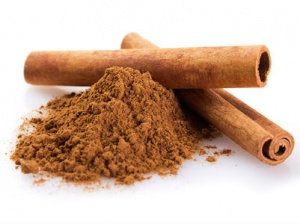Ceylon Cinnamon
Other Names: Cinnamon Bark, Batavia Cassia, Batavia Cinnamon, Cannelier de Ceylan, Cannelle de Ceylan, true Cinnamon, Cannelle de Saïgon, Cannelle du Sri Lanka, Ceylon Cinnamon, Ceylonzimt, Ceylonzimtbaum, Cinnamomum verum, Cinnamomum zeylanicum, Corteza de Canela, Dalchini, Écorce de Cannelle, Laurus cinnamomum, Madagascar Cinnamon, Padang-Cassia, Panang Cinnamon, Saigon Cassia, Saigon Cinnamon, Sri Lanka Cinnamon, Thwak, Tvak.
See also :
Contents
Ceylon Cinnamon vs. Cassia Cinnamon
Often referred to as "true" cinnamon, Ceylon cinnamon contains much higher levels of cinnamon oil compared to cassia varieties. At the same time, cassia cinnamon contains upwards of 200 times more coumarin than Ceylon cinnamon, containing up to 8 percent coumarin by volume. Comparatively, Ceylon cinnamon contains a mere 0.04 percent coumarin by volume. Coumarin has the potential to cause liver damage in humans even in relatively small quantities
Special Precautions of Ceylon Cinnamon
- Cinnamon bark is POSSIBLY SAFE for most people in amounts used for medicine. These amounts are slightly higher than amounts found in food. However, cinnamon bark is POSSIBLY UNSAFE when taken in large amounts. Taking cinnamon oil by mouth is POSSIBLY UNSAFE. The oil can be irritating to the skin and mucous membranes, including the stomach, intestine, and urinary tract. It can cause side effects such as diarrhea, vomiting, dizziness, drowsiness, and others.
- Pregnancy and breast-feeding: Consuming cinnamon is LIKELY SAFE when taken in food amounts during pregnancy and breast-feeding. Don’t take larger amounts of cinnamon if you are pregnant or breast-feeding. Not enough is known about the safety of taking larger amounts.
- Diabetes: Cinnamon might lower blood sugar in people with type 2 diabetes. Watch for signs of low blood sugar (hypoglycemia) and monitor your blood sugar carefully if you have diabetes and use cinnamon.
- Surgery: Cinnamon bark can affect blood sugar levels and might interfere with blood sugar control during and after surgery. Stop taking cinnamon at least 2 weeks before a scheduled surgery.
- Medications for diabetes (Antidiabetes drugs) interacts with CINNAMON bark.
Benefits and uses of Ceylon Cinnamon are
- The oils found in cinnamon bark are thought to reduce spasms, reduce gas (flatulence), and stimulate the appetite.
- Cinnamon might also increase blood flow.
- Cinnamon bark also contains a chemical that might work like insulin to lower blood sugar. However, these effects are thought to be fairly weak.
- There are also ingredients in cinnamon bark called tannins that might help wounds by acting as an astringent, and also prevent diarrhea.
- Cinnamon bark is used for gastrointestinal (GI) upset, diarrhea, and gas. It is also used for stimulating appetite; for infections caused by bacteria and parasitic worms; and for menstrual cramps, the common cold, and the flu (influenza).
- Parkinson's Disease (PD) : Researchers fed ground cinnamon to mice with Parkinson's disease. They found that, when the cinnamon reached the gut, it was broken down into various metabolites including sodium benzoate, a widely used food preservative. The sodium benzoate then entered the mice's brains, where it prevented the loss of Parkin and DJ-1, stopped neuron death and caused neurotransmitters including dopamine to return to normal levels.
- Anti-aging : Cinnamon is especially high in antioxidants, which remove free radicals from the body and can help prevent chronic disease and stave off the effects of aging. According to a study by researchers from the University of California-Santa Barbara, cinnamon may even help prevent Alzheimer's disease by protecting the brain's tau proteins from oxidative stress.
- Cinnamon bark, as part of a multi-ingredient preparation, is applied to the penis for premature ejaculation.
